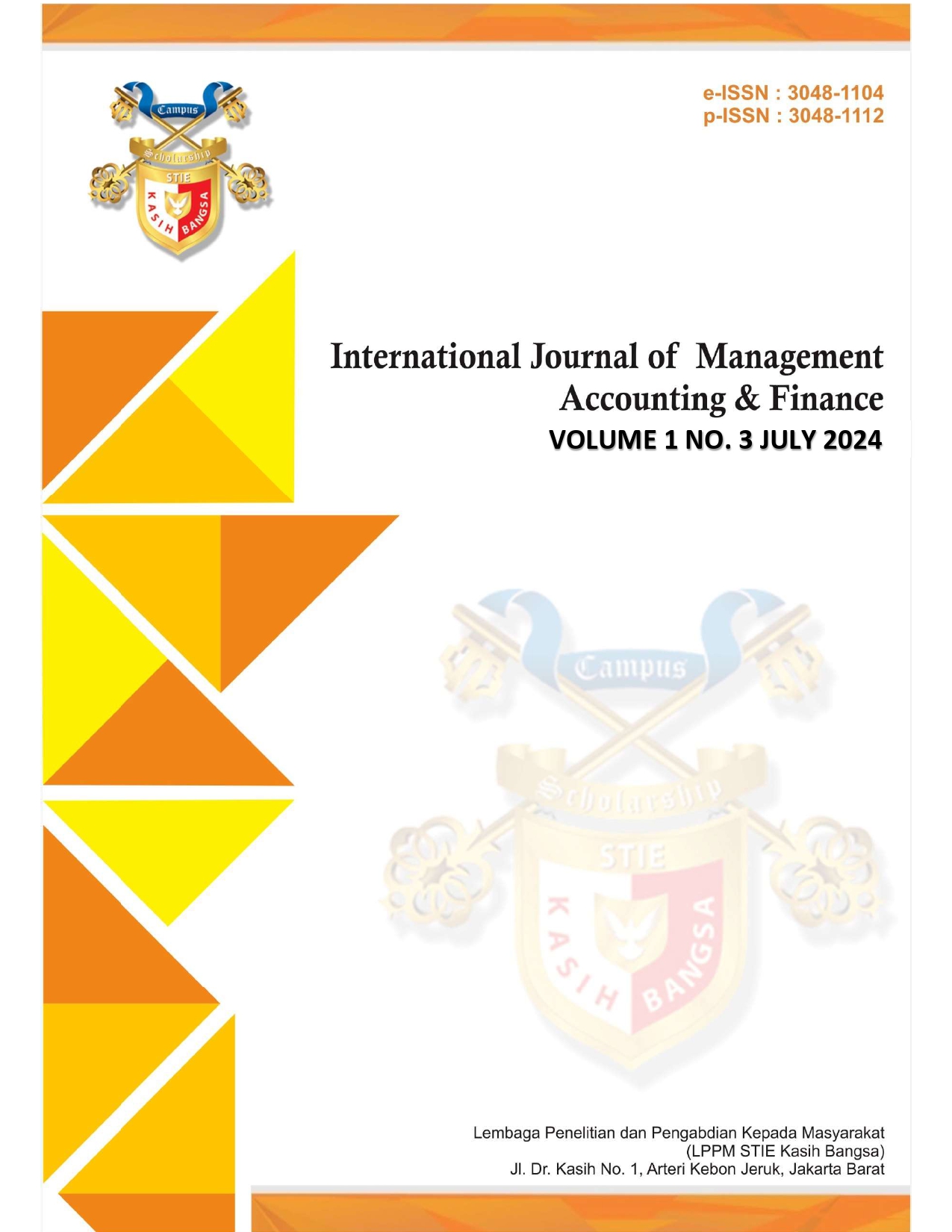Complexity, Clarity, and Earnings Management: The Impact of Financial Report Obfuscation on Investor Perception and Stock Valuation
DOI:
https://doi.org/10.70142/kbijmaf.v2i2.289Keywords:
financial report obfuscation, earnings management, investor perception, stock valuation, financial transparencyAbstract
This qualitative literature review explores the relationship between financial report obfuscation, complexity, transparency, and earnings management, focusing on how these factors influence investor perception and stock valuation. The review examines the strategic manipulation of financial reports by managers, specifically through obfuscation techniques that distort financial transparency. Obfuscation, by disaggregating financial data into numerous line items, can exacerbate biases in reported profitability, leading investors to extrapolate distorted valuations. This paper reviews the interplay between complexity and transparency in financial reporting and its implications for earnings management. It highlights the challenges investors face in interpreting complex financial reports, leading to potential misvaluation of firms. The review also considers how various factors, such as investor sophistication and managerial honesty, affect the degree of obfuscation and earnings management.
References
Barth, M. E., Landsman, W. R., & Lang, M. H. (2008). International accounting standards and accounting quality. Journal of Accounting Research, 46(3), 467–498. Benardi Benardi, Ngadi Permana, & Mohammad Chaidir. (2024). Dampak Keterlibatan Institusi Keuangan terhadap Sophistication Finansial dan Pengeluaran Konsumen . Jurnal Visi Manajemen, 10(2), 123–133. https://doi.org/10.56910/jvm.v10i2.555
Bianchi, M., & Jehiel, P. (2015). Financial reporting and market efficiency with extrapolative investors. Journal of Economic Theory, 157, 842–878.
Bianchi, M., & Jehiel, P. (2020). Bundlers' dilemmas in financial markets with sampling investors. Theoretical Economics, 15(2), 545–582.
Chan, D. K., & Gao, J. J. (2014). Earnings management, incentive contracts, and private information acquisition. Journal of Accounting and Public Policy, 33(6), 529–550.
Dominitz, J., & Manski, C. F. (2011). Measuring and interpreting expectations of equity returns. Journal of Applied Econometrics, 26(3), 352–370.
Einhorn, E., & Ziv, A. (2012). Biased voluntary disclosure. Review of Accounting Studies, 17(2), 420–442.
Fang, V. W., Huang, A. H., & Wang, W. (2017). Imperfect accounting and reporting bias. Journal of Accounting Research, 55(4), 919–962.
Fischer, P. E., & Stocken, P. C. (2004). Effect of investor speculation on earnings management. Journal of Accounting Research, 42(5), 843–870.
Fischer, P. E., & Verrecchia, R. E. (2000). Reporting bias. The Accounting Review, 75(2), 229–245.
Gneezy, U. (2005). Deception: The role of consequences. American Economic Review, 95(1), 384–394.
Greenwood, R., & Shleifer, A. (2014). Expectations of returns and expected returns. The Review of Financial Studies, 27(3), 714–746.
Guttman, I., Kadan, O., & Kandel, E. (2006). A rational expectations theory of kinks in financial reporting. The Accounting Review, 81(4), 811–848.
Harahap, S., Hermanu, D. H., Sugiharti, T., & Ruslaini. (2022). Lombok Teachers and Principals Building Resilience in Facing Earthquakes and Covid-19 Pandemic. Education Quarterly Reviews, 5(2), 153-163. ISSN 2621-5799 DOI: 10.31014/aior.1993.05.02.477
Hirshleifer, D., & Teoh, S. H. (2003). Limited attention, information disclosure, and financial reporting. Journal of Accounting and Economics, 36(1–3), 337–386.
Irawan, D., Prabowo, H., Kuncoro, E.A., Thoha, N. (2022). Operational Resilience as a Key Determinant of Corporate Sustainable Longevity in the Indonesian Jamu Industry. MDPI Journals Vol.14 No.11. https://doi.org/10.3390/su14116431.
Kumandang, C., Hendriyeni, N.S., 2021. Do awarded companies have fewer earnings management practices?. 1st Edition ISBN9781003196013: CRC Press.
Lambertsen, N. N. (2024). Manipulation and obfuscation of financial reports. Journal of Business Finance and Accounting, 51(1-2), 276–296.
Lo, K., Ramos, F., & Rogo, R. (2017). Earnings management and annual report readability. Journal of Accounting and Economics, 63(1), 1–25.
Ruslaini, E. K., Santoso, S., & Marhandrie, D. (2024). Diversity Management Strategies: Perspectives from Multinational Corporation. Journal of Economics, Finance and Management Studies. ISSN (print): 2644-0490, ISSN (online): 2644-0504. JEFMS Volume 07 Issue 03 March 2024. Page No: 1551-1555. https://doi.org/10.47191/jefms/v7-i3-18
Shiller, R. J. (2000). Measuring bubble expectations and investor confidence. The Journal of Psychology and Financial Markets, 1(1), 49–60.
Spiegler, R. (2006a). Competition over agents with boundedly rational expectations. Theoretical Economics, 1(2), 207–231.
Spiegler, R. (2006). Complexity, transparency, and the design of financial markets. The Journal of Finance, 61(4), 1643–1670.
Thoha, N., Fauzi, A., & Ahmar, A. S. (2021). Operational resilience and human capital: Toward corporate sustainable longevity in Indonesian Jamu industry. In International Conference on Business, Economics and Sustainable Development (ICBESD 2020) (pp. 51-58). Springer, Singapore.
















